When rain clouds roll in or temperatures drop, keeping kids active indoors becomes a challenge. But indoor recess doesn’t have to mean chaos. With the right games and equipment, you can turn confined spaces into hubs of creativity and teamwork. At NanPlay, a leading playground equipment manufacturer, we believe structured play promotes academic readiness and helps students display better behavior. Let’s dive into 15 indoor recess ideas that will make kids forget about the weather!
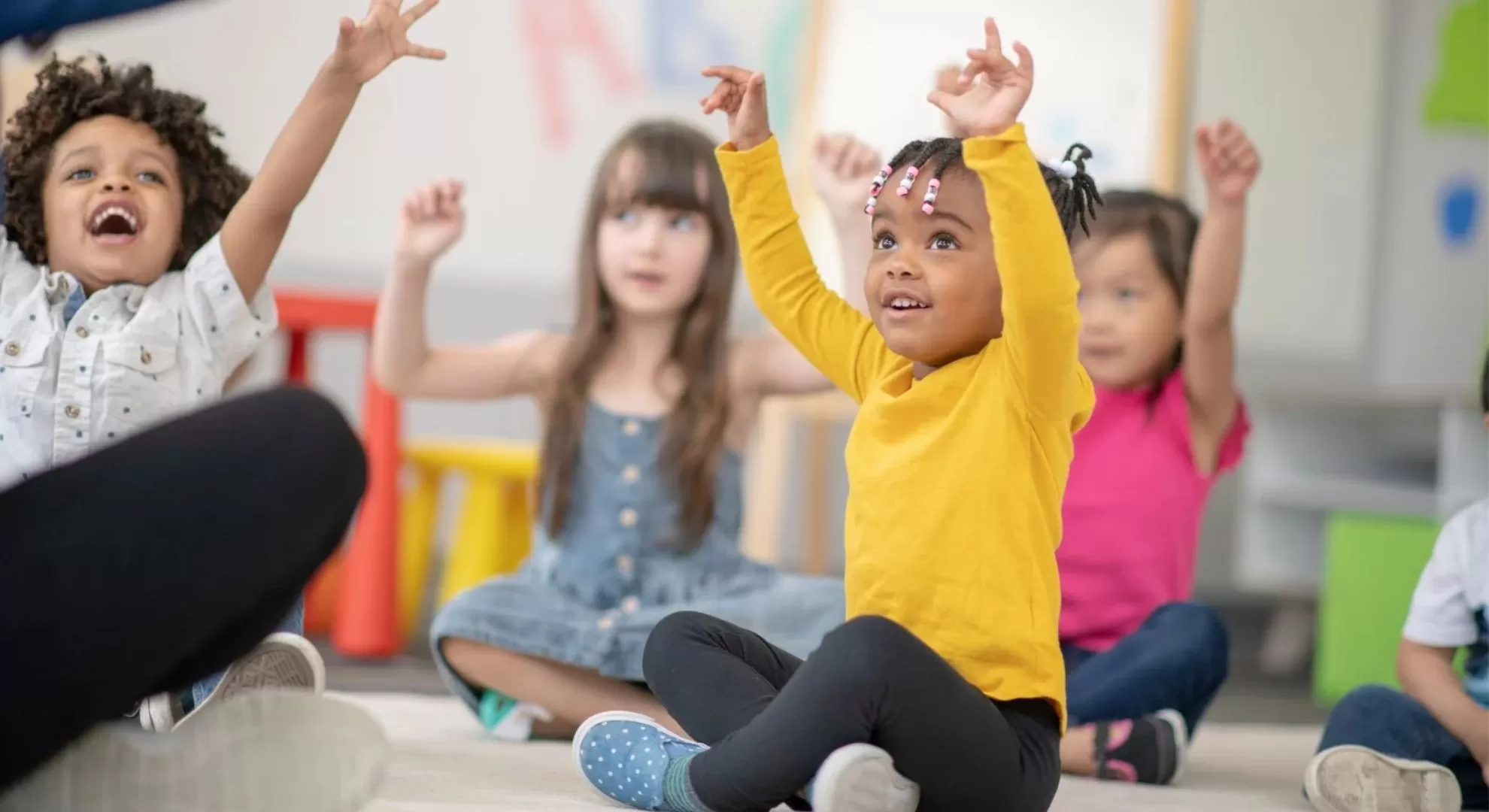
Get Playground Equipment for School
Here’s a quick list of indoor recess favorites suitable for all ages:
1. Four Corners Game
2. Chairless Musical Chairs
3. Indoor Scavenger Hunt
4. Silent Ball
5. Yoga Freeze Dance
6. Story Chain Theater
7. Shadow Puppet Showdown
8. Paper Plate Skating
9. Desk Obstacle Course
10. Human Knot Challenge
11. Balloon Volleyball
12. Mirror Movement
13. Rhythm Clap-Along
14. Flashlight Tag (Low Light)
15. DIY Mini Golf
Now, let’s explore age-specific activities and why structured play matters.
Research from the CDC shows that even 20 minutes of recess time improves focus and reduces restlessness. Structured games like hand jives or team building activities for 5th graders not only promote coordination and social skills but also stimulate kids’ imaginations. For instance, swapping traditional swing or slide time with indoor therapy games ensures kids stay engaged regardless of space constraints.
Schools using customizable equipment from trusted brands like NanPlay often report smoother transitions between outdoor and indoor play. Want to know what would work best for your school? Check our indoor recess solutions.
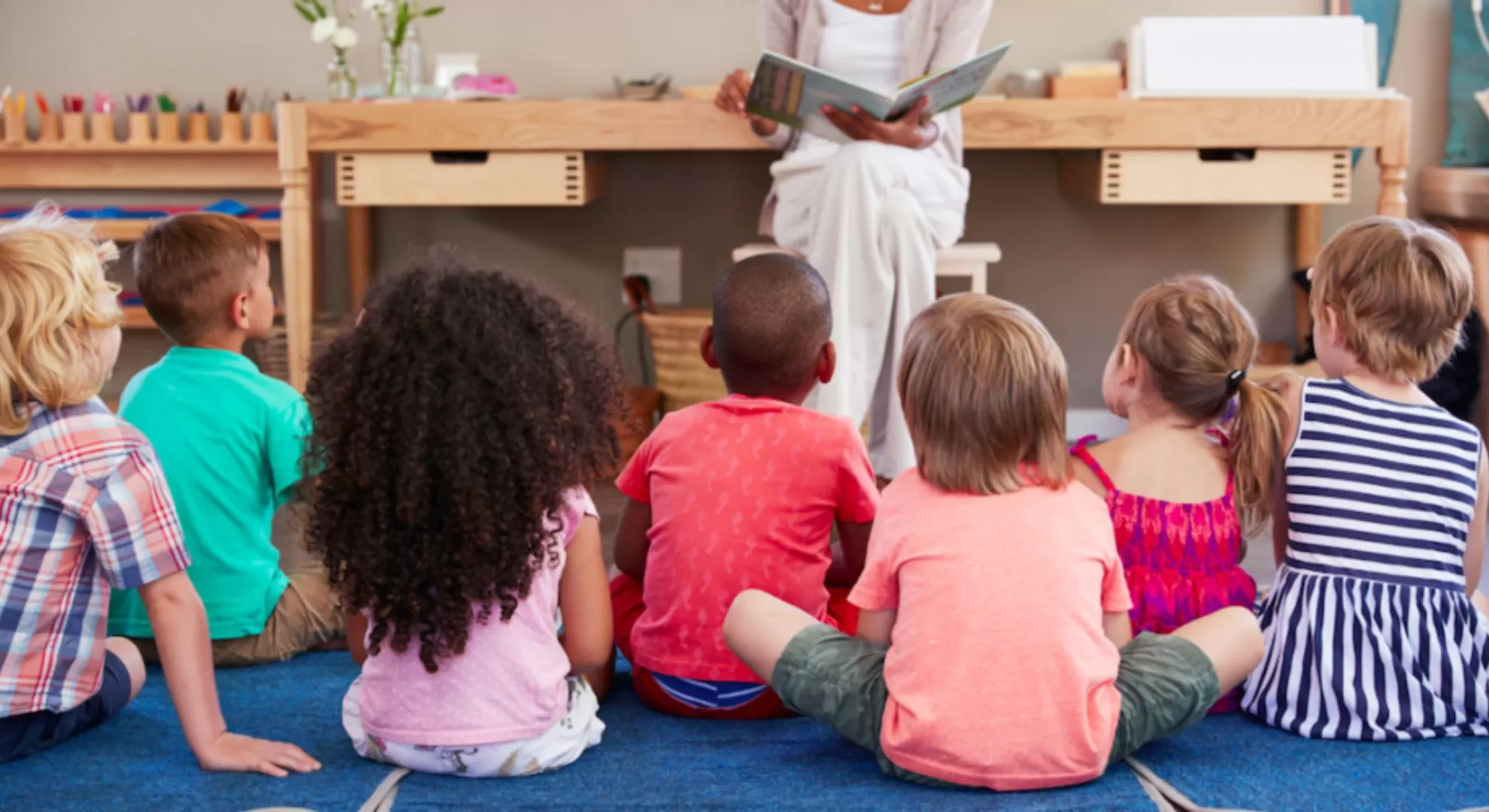
Structured play is vital for young learners to develop motor skills, creativity, and social interaction. These activities blend movement and imagination, perfect for small spaces like classrooms or indoor recess in the gym.
Transform your classroom into a glow-in-the-dark theater! Use flashlights and cardboard cutouts of animals, trees, or even dinosaurs. Turn off the lights and project the shadows onto a blank wall. Let kids take turns guessing the shapes (“Is that a giraffe or a dragon?”) while creating collaborative stories. This activity stimulates kids’ imaginations and encourages teamwork, as children negotiate plot twists (“The dragon should fly to the moon next!”). For extra fun, add sound effects using classroom instruments.
Tape paper plates under tiny feet and crank up upbeat music. Kids “skate” across carpeted floors, twirling, sliding, and racing without leaving the ground. Add obstacles like cones or stuffed animals to weave around. This no-equipment game enhances balance and spatial awareness while burning off energy. To extend the activity, turn it into a dance-off where skaters must freeze in silly poses when the music stops.
Combine literacy with movement by playing calming instrumental music while kids march in a circle. When the music pauses, they sit down, and the teacher reads a short story snippet (e.g., “The cat found a magic key under the couch…”). Resume the music, and kids act out the scene as they march. This structured recess activity builds listening skills and connects physical play with narrative comprehension.
Scatter colored paper shapes (red circles, blue squares) around the room. Call out a color, and kids race to collect matching items. For example, shout “Green triangles!” and watch them dash to gather all green triangles. Reinforces color and shape recognition while encouraging friendly competition. To add math skills, ask them to count how many they’ve found or sort items into labeled bins.
Lay a long sheet of bubble wrap on the floor and let kids jump, tiptoe, or crawl across it. The sensory-rich popping sounds delight younger children, and the activity channels energy constructively. Challenge them to cross the wrap without popping any bubbles or to create rhythmic patterns (pop-pop-PAUSE, pop-pop-PAUSE). This indoor therapy game also helps kids practice self-regulation and following instructions.

At this age, kids thrive on games that mix physical activity with problem-solving. These ideas build coordination and teamwork while fitting into indoor recess in small spaces.
Rearrange desks and chairs into tunnels, balance beams, and stepping stones. Time each student as they army-crawl under desks, hop between chair “islands,” and zigzag around backpacks. Add challenges like balancing a beanbag on their head or carrying a stuffed animal. This structured recess activity builds motor skills and is ideal for gym games for 2nd graders. For teamwork, have pairs navigate the course while holding hands.
Students sit in a circle and mimic increasingly complex hand-clap patterns. Start simple (clap-clap-snap) and gradually introduce stomps, thigh slaps, or tongue clicks. If a student misses a beat, they’re “out” and become the judge for the next round. This game doubles as a quick classroom game that sharpens listening skills and rhythm. To integrate math, create patterns based on multiplication tables (e.g., clap 3 times, stomp 4 times for 3×4=12).
Play upbeat music and let kids dance wildly. When the music stops, call out a letter (“Letter M!”). Students must freeze in a shape that represents the letter (arms up for “Y,” crouching for “O”). This game combines literacy with movement and encourages creativity. For older grades, call out sight words instead and have kids spell them with their bodies.
Label buckets or hula hoops with numbers (1-20). Kids toss bean bags while solving equations shouted by the teacher. For example, “Aim for the sum of 5+3!” means tossing into the “8” bucket. Reinforces math skills playfully and adapts to different skill levels (use multiplication for advanced students). To encourage teamwork, have pairs collaborate on equations before tossing.
Pair students as “mirrors.” One child leads slow, exaggerated motions—tiptoeing, waving, or balancing on one foot—while their partner copies. After two minutes, switch roles. This activity enhances focus, coordination, and empathy as kids experience both leading and following. For a challenge, introduce “silent mirrors” where pairs communicate only through gestures.
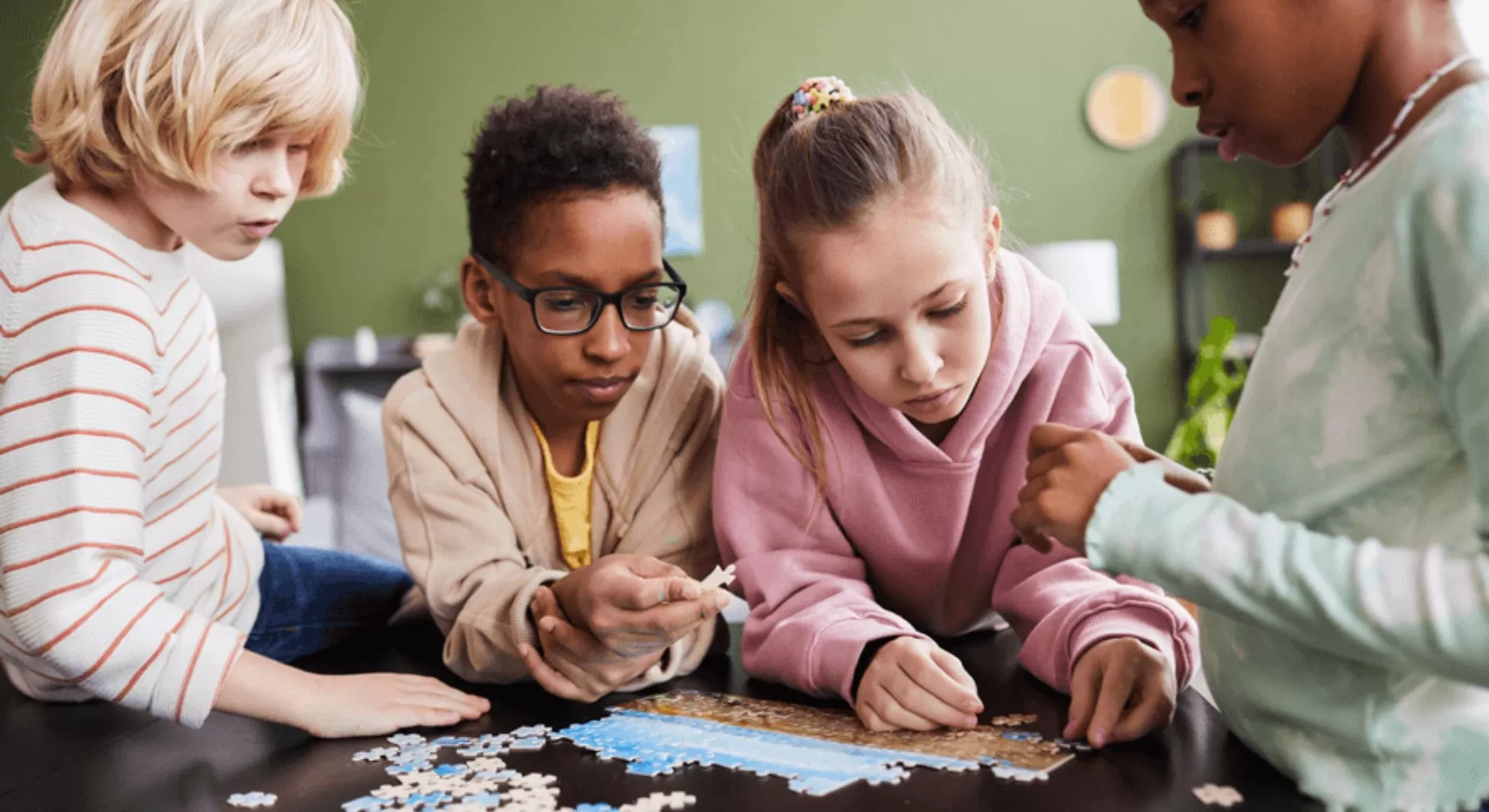
Older elementary students enjoy challenges that test creativity and strategy. These games work well for indoor recess in the gym or classrooms.
Divide into groups of 6–8. Students stand in a circle, reach across to grab random hands (no two neighbors!), and untangle the knot without breaking the chain. It’s a hilarious team-building activity that encourages problem-solving and communication. For added difficulty, set a 5-minute timer or require groups to stay silent while untangling.
String a jump rope across the room as a “net.” Divide into teams and use only gentle taps to keep balloons airborne. Players must stay seated or designate “zones” they can’t leave. This active game for middle schoolers teaches teamwork and reflexes. To integrate STEM, discuss force and trajectory (“Why did the balloon curve left?”).
Teams race to complete a 50-piece jigsaw puzzle—without talking! Students communicate through gestures, facial expressions, or drawing clues. Encourages non-verbal collaboration and patience. For younger grades, use fewer pieces or provide a reference image. Award bonus points for creative communication methods.
Provide props like scarves, hats, and stuffed animals. Groups create 5-minute plays with a beginning, middle, and end. Themes could include “A Day on Mars” or “The Talking Pizza.” Performances stimulate imaginations and boost public speaking confidence. Record the plays and host a classroom film festival for added excitement.
Dim the lights and give each student a flashlight. Designate 2-3 “taggers” who try to “catch” others by shining light on them. Tagged players freeze until a teammate rescues them with their beam. This safe, thrilling game works well for indoor recess games no equipment. Discuss light science afterward (“Why do shadows get bigger closer to the wall?”).

Preteens need engaging activities that balance competition and collaboration. These games work for indoor recess in the gym or classrooms.
Use a soft foam ball. Students toss it silently around the room—any laughter or dropped ball results in elimination. The last remaining player wins. This quiet indoor recess game teaches self-control and focus. For variety, introduce rules like left-hand-only throws or bouncing passes.
Create a 3-hole course using cups, cardboard ramps, and pool noodles as putters. Kids design obstacles like “windmills” from construction paper or tunnels from shoeboxes. Perfect for indoor recess games no equipment—just repurpose classroom supplies! Add math by keeping score under par or measuring angles for bank shots.
Set up 15-minute puzzle stations around the room. Examples:
– Solve a riddle to unlock a box of clues.
– Rearrange letter tiles to spell a secret word.
– Crack a code using math problems.
Teams collaborate to “escape” before time runs out. This structured recess activity builds critical thinking and time management.
Place sheets of paper (“islands”) on the floor. Play music while kids walk around. When it stops, they must stand on an island—no touching the floor! Remove one island each round. Players share space or piggyback to stay safe. A hilarious twist on the classic that requires cooperation.
Split into teams and assign fun debate topics (“Homework should be banned!”). Each side gets 2 minutes to prepare arguments. Judges award points for creativity, clarity, and teamwork. This active game for middle schoolers sharpens public speaking and quick thinking.
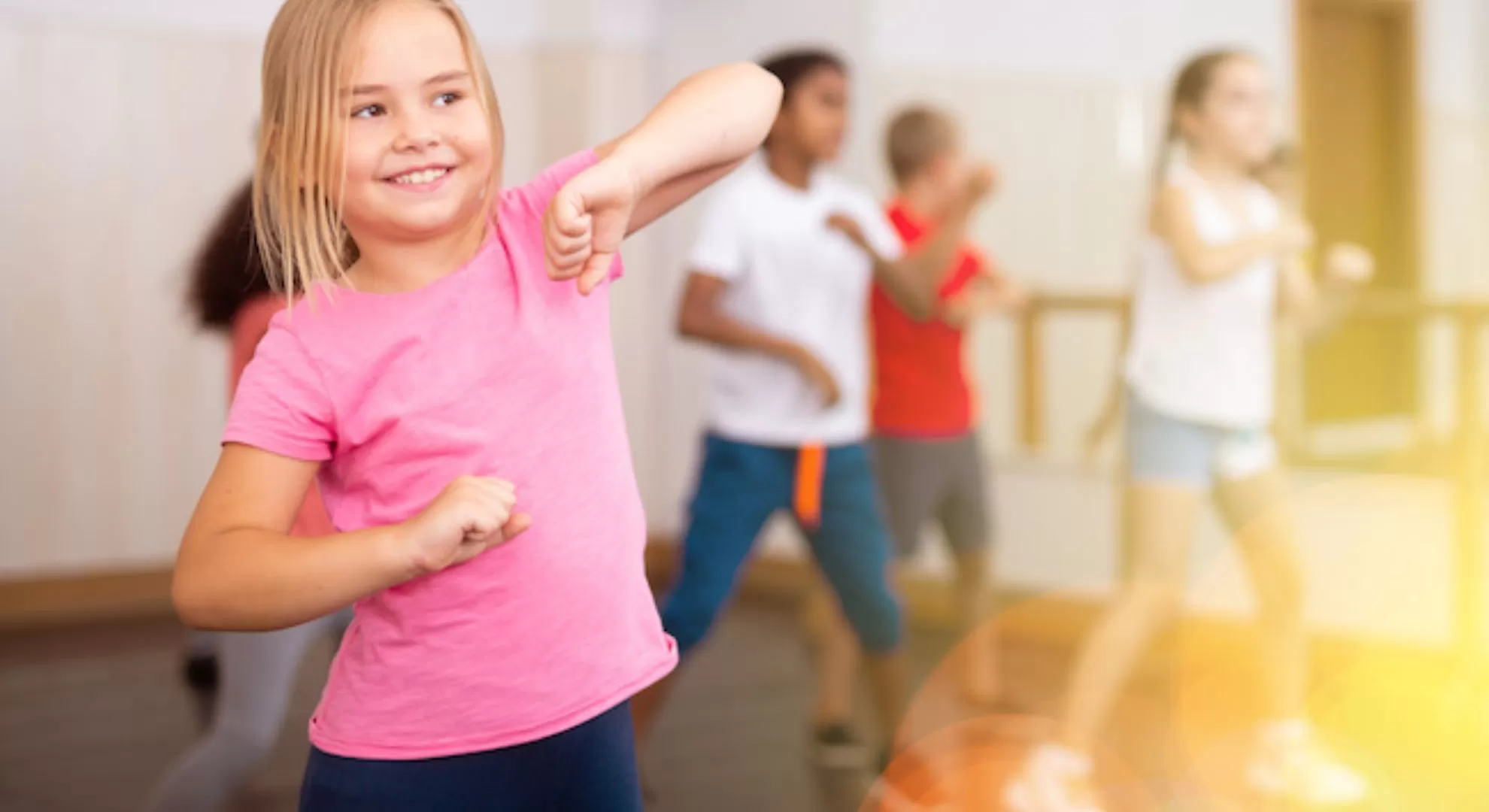
From preschoolers to preteens, these adaptable games ensure no one misses out on recess fun:
Label room corners 1–4. One student closes their eyes and calls a number. Kids in the chosen corner sit down. Repeat until one player remains. A classic recess game for elementary that requires stealth and strategy.
Play music and let kids dance wildly. When it stops, everyone strikes a yoga pose (tree, downward dog). Combines mindfulness with indoor recess exercise. For older grades, add balance challenges (hold poses for 10 seconds).
Start a story (“Once, a shark learned to ride a bike…”). Each student adds a sentence, building a collaborative tale. Act out scenes as the story grows. Enhances creativity and listening skills.
Play music while passing a squeaky rubber chicken. Whoever holds it when the music stops does a silly dance or answers a trivia question. A lighthearted quick classroom game that breaks the ice.
Teams work together to keep balloons airborne using only breaths—no hands! Set a timer or challenge them to reach 50 collective taps. Encourages teamwork and controlled breathing.
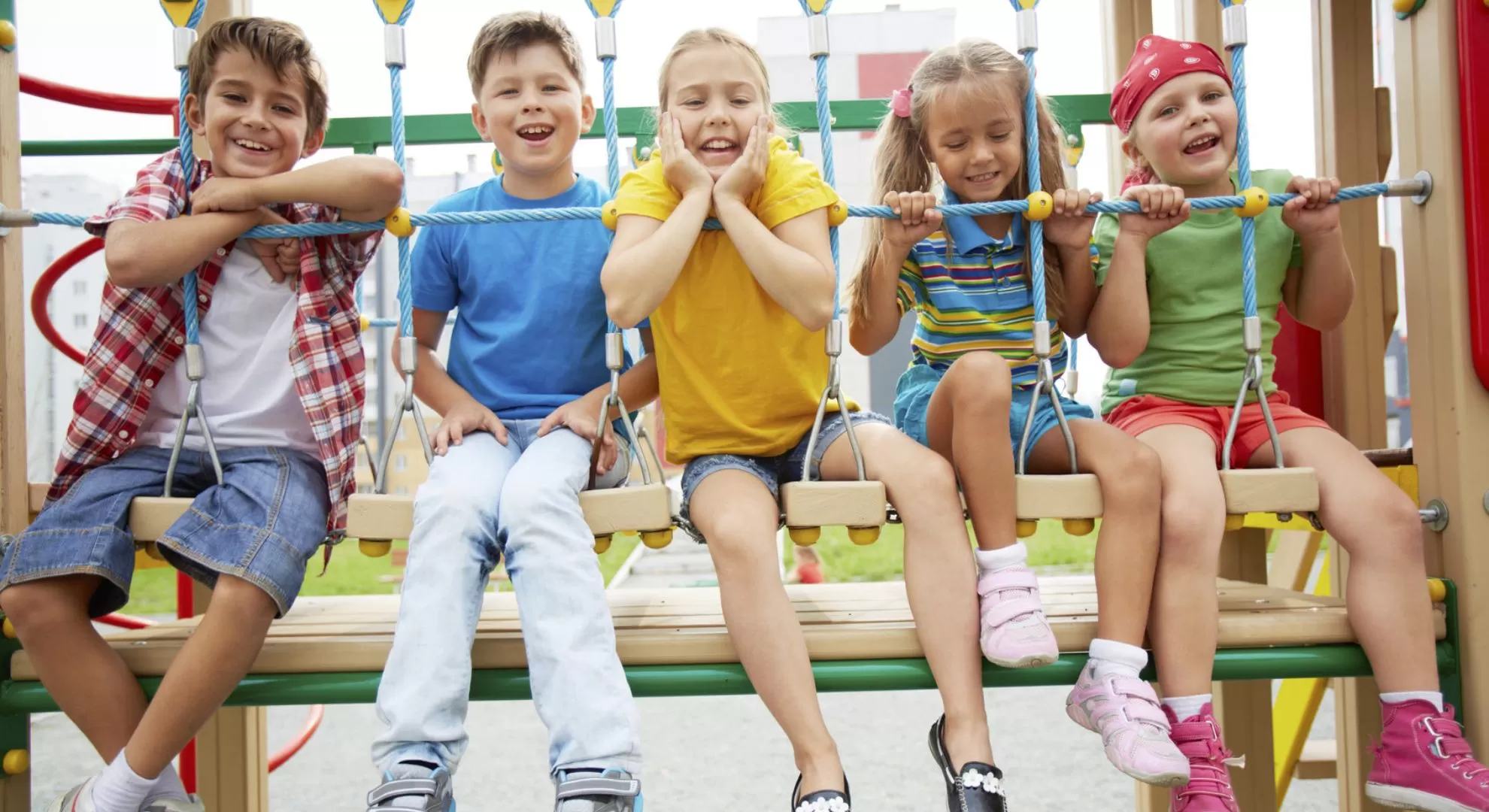
While outdoor recess is beneficial, indoor play can be just as rewarding. For schools with limited space, NanPlay’s indoor recess equipment like foam balance beams or foldable tunnels ensures seamless transitions. Explore our indoor play solutions designed to promote coordination and social skills.
Need more ideas? Edutopia shares fantastic tips for integrating play into learning.
Final Tip: Rotate games weekly to keep excitement high. Whether you’re using sonic jets for imaginary play or passing around a squeaky rubber chicken during storytime, creativity is key. And remember: a well-planned recess means happier, more focused students!
Fun and Educational Games to Play in the Classroom
Thank you very much for your inquiry! Your trust is our greatest motivation. We are committed to offering playgrounds that combine high quality with affordable pricing. Let us bring vitality to your venue!